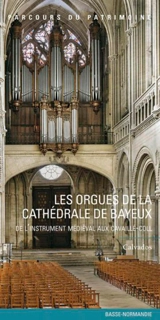
The abbaye aux Dames, Caen : Calvados
Basse-Normandie. Direction de l'Inventaire général du patrimoine culturel
Versailles, Lyon 2ᵉ, Lyon 6ᵉ...
Ce que dit l'éditeurBuilt on a hill to the north-east of the city by Queen Matilda of Flanders, wife of William the Conqueror, the Abbaye aux Dames has a marvellous view of Caen harbour and the surrounding plain. The convent, set within 10 hectares of grounds, was completely rebuilt in the 18th century and is now a listed building, recognised as one of Normandy's finest examples of classical architecture. Its Romanesque church, near the entrance, remains intact, and was a focal point for 19th century architects and historians, who were fascinated by their country's heritage. The upheaval of the French Revolution saw the convent handed over to the army. However, under the Napoleonic Empire, its buildings and gardens, with their majestic lime walks, were converted for hospital use - first sheltering Caen's main hospital, or Hôtel-Dieu, and subsequently the Hospice Saint-Louis care-home for orphans and the elderly - until 1983, when the buildings became the headquarters of the Basse-Normandie Regional Council and its various departments. The work recounts the 900 year history of this collection of monastic buildings, whose impressive restoration and rehabilitation have made it a true jewel in the city's crown today. The Inventory records, studies and promotes the historical and artistic heritage of France. The Parcours du patrimoine, developed as an aid to cultural tourism, is a guide to help you on the way to discovering. |
RésuméFondée au XIe siècle par la reine Mathilde de Flandre, épouse de Guillaume le Conquérant, l'abbaye aux Dames offre un point de vue singulier sur la plaine de Caen et son port. L'ouvrage présente une synthèse illustrée de plus de 900 ans d'histoire de ce lieu, de ses caractéristiques architecturales et de ses fonctions successives : occupations militaires, attributions hospitalières, etc. ©Electre 2025 |
Caractéristiques Éditeur(s) Date de parution
19 juin 2015
Collection(s)
Parcours du patrimoine
Rayon
Architecture, urbanisme
Contributeur(s) Hélène Billat
(Auteur du texte), Manuel de Rugy
(Photographe) EAN
9782362191190
Nombre de pages
72
pages
Reliure
Broché
Dimensions
23.0
cm x
12.0
cm x
0.7
cm
Poids
190
g
|

















